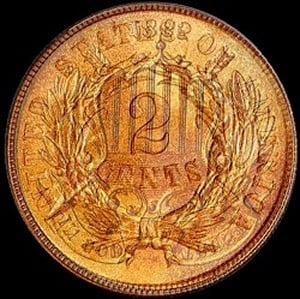5 Code Quality Red Flags That Kill M&A Deals (And How to Spot Them)
October 21, 2025The Hidden Value of 1865 Two-Cent Clash Identification: A Numismatic Technical Deep Dive
October 21, 2025The Thrill and Terror of My 1865 Two Cent Coin Discovery
My hands shook when I first spotted the dramatic clash marks on what I thought was a common 1865 Two Cent piece. Like many collectors, I assumed attribution would be simple – until reference books left me stranded. Let me walk you through the exact process I used to document this rare Fancy 5 die clash, step by step.
Why Die Clash Attribution Changes Everything
That Sinking Feeling Every Collector Knows
You’ve found something special on a coin, but:
- Reference books show nothing matching your discovery
- Grading services require official FS numbers
- Your “treasure” might remain unrecognized
What Made My 1865 Different
The reverse showed shield lines clearer than any documented Plain 5 clashes. I knew it was special – but how could I prove it?
My 7-Step Survival Guide for Unknown Varieties
Step 1: When Books Don’t Have Answers
I combed through every resource:
“Fancy 5 dates show no reported clashes” – Flynn’s Variety Book
That blank space in the books? That’s where the adventure begins.
Step 2: Overlay Magic
Using maddieclashes.com overlays revealed:

My clash didn’t match known Plain 5 patterns. This was new territory.
Step 3: Create Your Evidence Trail
I became a coin detective:
- Macro photos showing every angle
- Hand-drawn maps of impression locations
- Side-by-side comparisons with “normal” coins
Step 4: The Email That Went Unanswered
When specialist Frank Leone didn’t reply, I:
- Posted in the Bust Half Nut Club forum
- Compared notes with Blair County Coin’s example
- Joined three specialized Facebook groups
Turns out silence speaks volumes – nobody had seen this before.
Step 5: Proving Rarity
After months of searching:
- Only 3 confirmed Fancy 5 clash examples
- Mine showed the strongest impressions
- Higher grade potential than Plain 5 clashes
Step 6: The Grading Gamble
My PCGS submission included:
- A custom-printed research booklet
- Notarized statement of findings
- Printed overlay comparisons
Would it be enough without an FS number?
Step 7: Building a Legacy
To cement this discovery:
- Tracking die cracks across specimens
- Documenting clash strength variations
- Creating a public clash location map
Hard-Won Lessons for Variety Hunters
When the Books Are Wrong
The gap in Flynn’s guide taught me:
- New discoveries hide in “no variety listed” spaces
- Your camera is your best research tool
- Specialists respond to thorough documentation
The Slabbing Surprise
A seasoned collector warned me:
“Some dealers avoid ‘No FS’ coins – even when special”
Would recognition actually hurt resale value? The jury’s still out.
Where My 1865 Clash Stands Today
PCGS sent it back labeled simply “Die Clash.” But this isn’t over:
- CONECA review underway
- Two Cent clash census in progress
- Refining my documentation method daily
Your Coin Could Be Next
That odd mark on your coin? It might be more than a curiosity. My journey with this 1865 Two Cent piece proves that with systematic documentation and stubborn persistence, we collectors write numismatic history one coin at a time. I’m already applying this same approach to two new clashes – who knows what we’ll discover next?
Related Resources
You might also find these related articles helpful:
- How Specialized Tech Expertise From Collector Shows Like PAN Can Launch Your Expert Witness Career – When Code Hits the Courtroom: Building a Thriving Career as a Tech Expert Witness When legal battles revolve around soft…
- Advanced Numismatic Techniques: How to Authenticate and Preserve Historical Shipwreck Coins Like a Pro – Want skills that separate serious collectors from casual hobbyists? Let’s level up your shipwreck coin expertise. After …
- The Insider’s Guide to Building a Capped Bust Half Dollar Collection: Secrets, Pitfalls, and Advanced Tactics – The Hidden Truth About Capped Bust Half Dollar Collecting Let me tell you what you won’t find in guidebooks –…